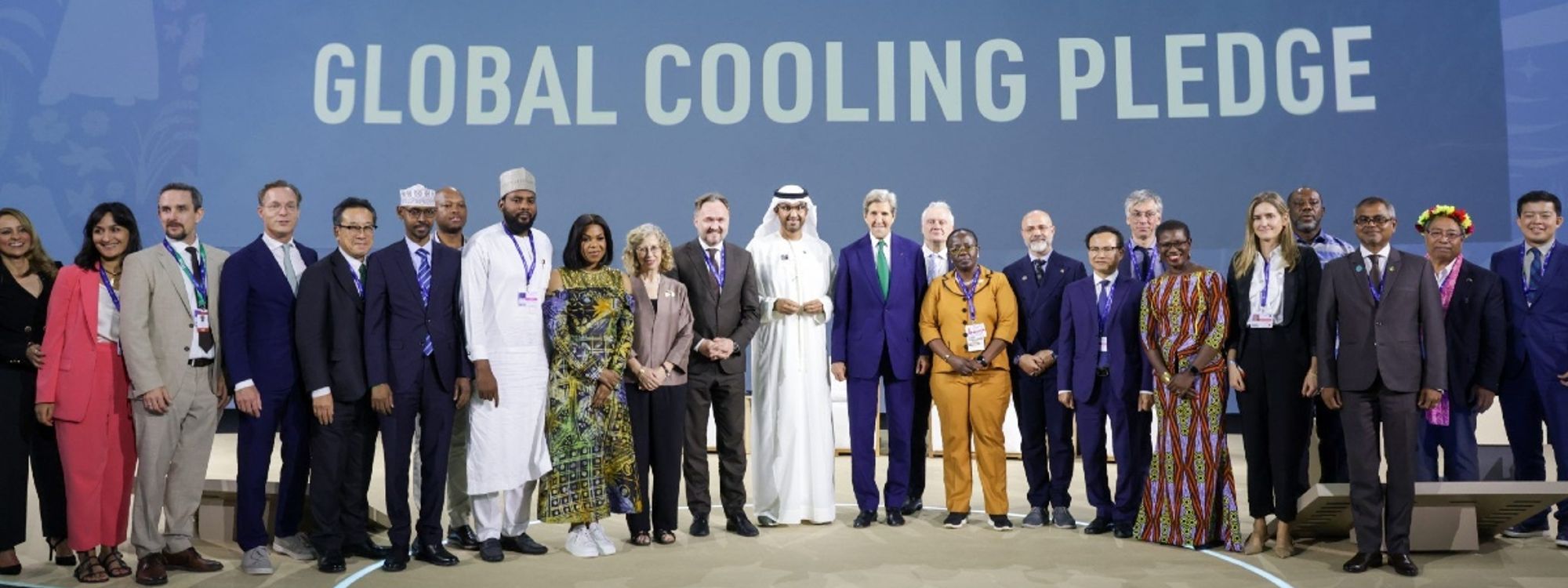Cleaning up how we cool down
Today’s cooling technologies are energy-intensive, polluting, and inaccessible to many. If we’re to minimize our climate impact while ensuring cooling needs are met, adopting energy-efficient, climate-friendly, grid-friendly, and affordable solutions is a must.
But how can we optimize policy and market conditions for the widespread adoption of these improved cooling technologies?
As global temperatures rise, the need for cooling has become a vital part of modern-day life in order to keep safe from the threats of extreme heat, with many people now considering it a human right.
The irony is that the increasing demand for cooling is fueling the proverbial climate fire thanks to the energy intensity of today’s cooling technologies and the climate impact of the refrigerants they contain. To avoid locking ourselves into this dangerous feedback loop, we must urgently transform the cooling sector.
A large part of this transformation will be reducing the need for mechanical cooling through smarter building design and urban planning, but in many parts of the world, we cannot rely on passive measures alone to keep people, food, and medicines cool. As the mercury continues to climb and extreme heat events become more frequent and more intense, mechanical cooling technologies (like air conditioning) are no longer a luxury; instead, they have become a necessity.
Because of this, another part of the transformation will be ensuring that the cooling technologies being installed in our homes, schools, and work places are as sustainable as possible – i.e., energy efficient, climate friendly, grid friendly, and affordable.
While this may sound like an impossible feat, there are several existing solutions that can help reduce the sector’s energy consumption and greenhouse gas (GHG) emissions. That said, some need to be developed further and quickly, and they all must be rolled out at scale to significantly reduce cooling’s climate impact.
If we get cooling right, we could avoid 100 gigatons of CO2e by 2050 while also closing the cooling access gap.
Energy-efficient cooling
According to recent analysis from the IEA, space cooling accounted for nearly 16% of the building sector’s electricity consumption in 2021 after experiencing the highest annual growth among all building end uses.
Without moving towards the best available products and improving the performance of the buildings and environments in which they operate, the IEA predicts that the electricity demand for space cooling in buildings could increase by as much as 40% globally by 2030.
Electricity demand for space cooling in buildings could increase by as much as 40% globally by 2030.
To prevent this outcome, we are collaborating with several of our implementing partners to scale up the adoption of these ‘best available products’.
Building on the fantastic work completed under RMI’s Global Cooling Prize, we are working to catalyze the transition from the prize’s “5X” air conditioner prototypes – i.e., units that can provide thermal comfort with five times less climate impact – to market-ready products.
First up is revising the test procedures for measuring product energy use and performance. As the current method only tests at medium humidity levels and full loads, it doesn’t capture the additional energy savings that the 5X and other models can deliver in climates with high humidity and when operated at partial load. Including these features in test methods will help distinguish these super-efficient products from those currently in use.
Partnership with industry and government partners is critical to creating conditions that support the delivery of breakthrough technologies into the marketplace.
Within the next few years, our target is to see 5X air conditioner technologies being developed and commercialized by multiple manufacturers.
Ambitious efficiency standards and labels are also an important part of the equation to ensure that only the most energy efficient appliances are produced and sold.
According to the IEA, to get on track with the Net Zero Scenario, the average efficiency rating of new air conditioners would need to increase at least 50% by 2030 in all markets. The IEA also stipulates that policies like Minimum Energy Performance Standards (MEPS) could double the average air conditioner’s efficiency.
And while more than 80 countries already have MEPS for air conditioners and additional standards are currently under development in more than 20 countries, not all MEPS are created equal. Any existing MEPS that is not ‘best practice’ – i.e., in line with United for Efficiency’s Model Regulation Guidelines – should be updated.
By 2026, we hope to have raised the efficiency floor and removed the least efficient cooling products (e.g., fixed speed air conditioners) from key markets, much like China has achieved with its adoption of top tier standards.
In addition to providing clean heating, heat pump technologies also have the ability to provide energy-efficient cooling. In fact, replacing old air conditioning units with a heat pump can improve your home’s cooling efficiency by 50%. Because of this, we are also working to scale up and deploy innovative dual heating and cooling solutions like heat pumps.
If we get cooling right, we could avoid 100 gigatons of CO2e by 2050 while also closing the cooling access gap.
Climate-friendly cooling
Hydrofluorocarbons (HFCs) dominate the cooling market and are thousands of times more harmful to our climate than CO2. By ensuring global implementation and compliance of the Kigali Amendment to the Montreal Protocol, which phases down the production and consumption of HFCs and other refrigerants with high global warming potential (GWP), we could avoid significant GHG emissions.
In collaboration with many of our implementing partners, we are working to ensure proper Kigali implementation and, in some places, an expedited phasedown by leveraging the environmental and economic advantages of early action.
Grid-friendly cooling
As demand for cooling increases, it’s projected to contribute to almost 50% of some countries’ peak electricity load, leading to power outages and high costs for consumers.
Demand response programs can enhance the flexibility of cooling loads, reducing strain on power grids, which is particularly important as electric grids evolve into more dynamic systems with the increasing use of renewable power.
To support this transition, we are working to scale up and deploy innovative demand management solutions and enabling business models.
Affordable cooling
Simply developing energy-efficient, climate-friendly, and grid-friendly cooling technologies is not enough; we must also ensure that these solutions are affordable and accessible to everyone who needs them.
There are numerous projects underway that are improving the affordability and accessibility of clean cooling solutions, but more on that in an upcoming blog…
The right solutions already exist, we just need to urgently scale up the adoption of these technologies around the world.
Today’s cooling technologies consume a vast amount of electricity and produce a significant amount of global GHG emissions (more than 7%) and more must be done to dramatically reduce cooling’s climate impact without limiting access to the communities and sectors who need it.
The right solutions already exist, we just need to urgently scale up the adoption of these technologies around the world.


